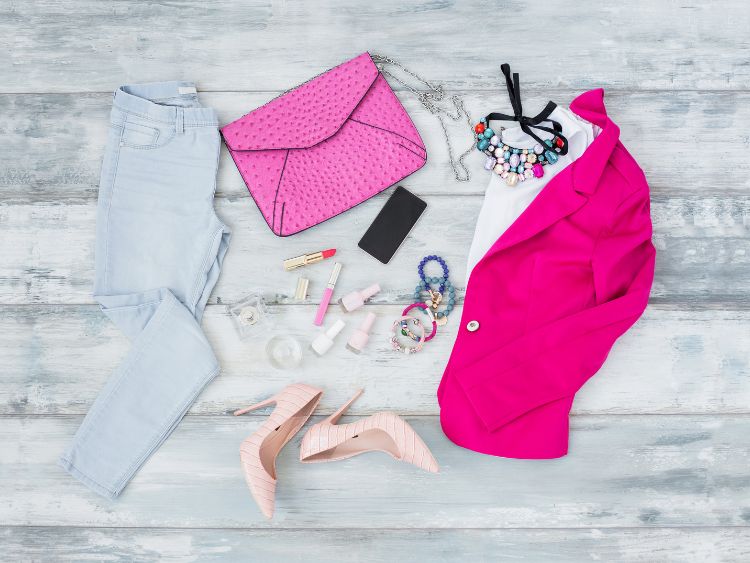The 1960s was a vibrant, transformative decade, and fashion reflected the changing attitudes of the time. From miniskirts to mod culture, this era brought a shift in how people dressed and expressed themselves. Let’s dive into the iconic elements of 1960s fashion, which continue to influence the styles we see today.
1960s Fashion
The 1960s was a decade of rebellion, freedom, and self-expression. It broke away from the conservative silhouettes of the 1950s, and youth culture took center stage. Designers were no longer dictating trends from the top down; instead, young people were driving the movement. Fashion became a symbol of revolution, and everyone wanted to be a part of it.
The Rise of the Miniskirt
When we think of 1960s fashion, the miniskirt immediately comes to mind. Invented by British designer Mary Quant, the miniskirt revolutionized women’s fashion. It was bold, rebellious, and scandalous for the time. Women embraced the opportunity to show more leg, breaking away from the modest hemlines of the previous decade.
Why Was the Miniskirt So Revolutionary?
In a decade where traditional values were being challenged, the miniskirt became a symbol of liberation. Women were asserting their independence and redefining femininity on their terms. Quant famously said, “It wasn’t me or the girls in the shop who decided the mini would be short—it was the girls on the street!” That sums up the spirit of the ’60s—fashion was no longer confined to the elite; it belonged to everyone.
Mod Culture and Its Influence
The 1960s was also the era of the “Mods.” This British subculture took fashion to a whole new level with its sleek, minimalist look. Mod fashion for men typically included slim-fitting suits, skinny ties, and Chelsea boots. Women embraced geometric shapes, bold colors, and sleek lines in their outfits.
Key Mod Fashion Elements:
- Mini Dresses: Clean lines and bright, often contrasting colors were popular.
- Bold Patterns: Think polka dots, stripes, and checks.
- Go-Go Boots: Knee-high, white boots became a staple for women.
- Peter Pan Collars: These added a touch of youthful innocence to many dresses and blouses.
The Psychedelic Explosion
As the decade progressed, fashion started to reflect the growing influence of psychedelic art and music. The late 1960s saw the rise of flower power and bohemian styles, characterized by flowing garments, bold prints, and an explosion of color.
Psychedelic Fashion Staples:
- Tie-Dye: Bold, swirling patterns of color became synonymous with the counterculture movement.
- Bell-Bottoms: Pants widened at the bottom to create a dramatic, flowing silhouette.
- Fringe and Suede: Boho-chic was born, with natural materials taking the spotlight.
- Peace Symbols: Accessories and clothing were often adorned with peace signs, representing the anti-war sentiment of the time.
The Influence of Icons
Fashion in the 1960s was also heavily influenced by the rising celebrity culture. Icons like Twiggy, Jackie Kennedy, and The Beatles played a significant role in shaping trends. Twiggy’s androgynous look, with her pixie haircut and dramatic eye makeup, became the defining style for women. Meanwhile, Jackie Kennedy’s impeccable, polished outfits set a high bar for elegance and class.
Jackie Kennedy’s Timeless Style:
- Pillbox Hats: Often worn tilted to the side, these hats became her signature look.
- A-Line Dresses: Simple yet elegant, often in pastel colors or rich fabrics like silk.
- Chanel Suits: Tailored, classic, and feminine.
The Impact of 1960s Fashion on Today
1960s fashion continues to influence modern style. From runway shows to street fashion, you can still see nods to this groundbreaking decade. Whether it’s the revival of the mini skirt or the ongoing popularity of retro prints, the ’60s left an indelible mark on fashion.
FAQs About 1960s Fashion
What was the most iconic piece of clothing from the 1960s?
Without a doubt, the miniskirt. It symbolized the rebellion and freedom of the era.
How did 1960s fashion differ from previous decades?
The 1960s broke away from the conservative, structured styles of the 1950s. It embraced bold colors, shorter hemlines, and a more youthful, casual look.
Who were some major fashion icons of the 1960s?
Twiggy, Jackie Kennedy, and The Beatles had a significant influence on ’60s fashion.
How did the counterculture influence fashion?
The counterculture movement, especially in the late ’60s, embraced bohemian and psychedelic styles, with flowing fabrics, tie-dye, and fringe becoming popular.
What were the key colors and patterns of the 1960s?
Bright, bold colors like orange, pink, and yellow were popular, along with geometric patterns, stripes, and polka dots.
Conclusion
The 1960s was a decade of transformation in fashion, and its influence can still be seen today. From the rebellious miniskirt to the psychedelic explosion of the late ’60s, this era redefined what fashion could be. It was more than just clothes—it was a statement. Whether you’re looking for retro inspiration or just want to appreciate how far fashion has come, the 1960s remains an iconic chapter in style history.
Authoritative Links
- www.vam.ac.uk/articles/1960s-fashion
- www.britannica.com/topic/fashion/1960s-dress
- www.history.com/topics/1960s

